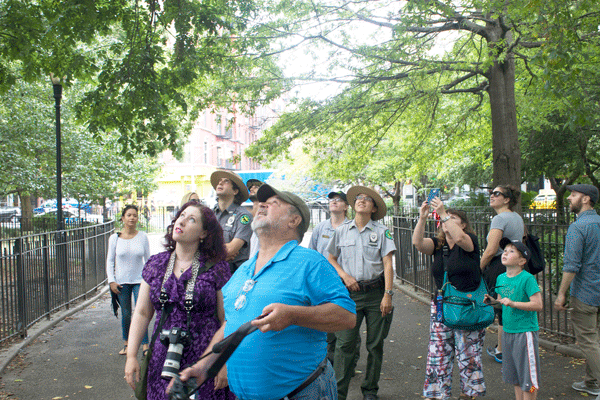
BY ZACH WILLIAMS | When danger threatens a hard-working father like Christo and his family — or pretty much whenever they decide to spread their wings — Tompkins Square Park bird enthusiasts flock to them.
Admirers of Christo, a red-tailed hawk, eagerly chronicle his life as well as the development of his three eyases and the comings and goings of his longtime mate, Dora.
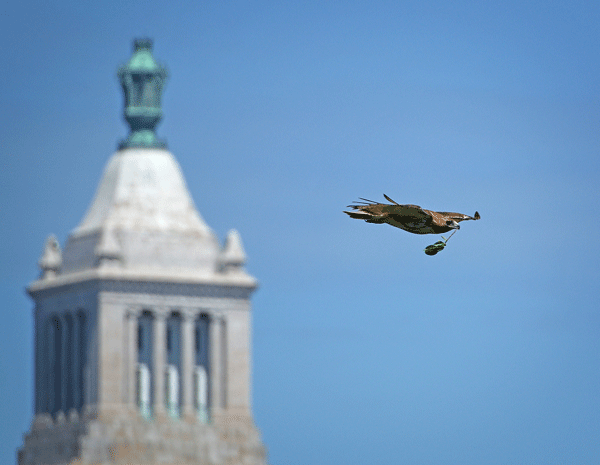
The raptors, whose wingspan can reach up to four-and-a-half feet in adult birds, have a rapt audience of locals who feast on their activities in the park.
Local photographer Laura Goggin has followed the development of the family over the last year, seldom missing a day. Her photo blog (gogginphotography.com) began with shots of the now-shuttered Mars Bar, but gradually began to focus more and more on her encounters with the hawks.
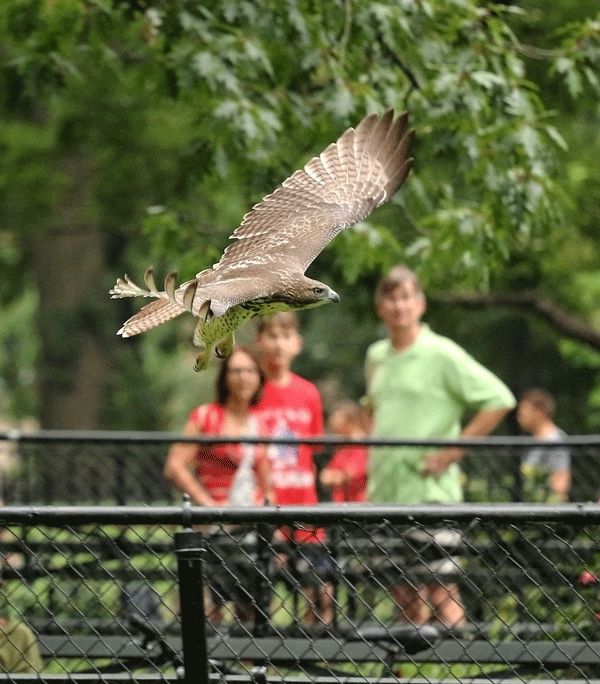
Observing the birds, she said, has changed her perspective of the park, which she has regularly visited since moving to New York City 15 years ago.
Goggin admits she had a lot to learn about birds when she began shooting them with her Canon 70D camera last year. She now astutely listens for the cackles of blue jays and mockingbirds in the park, signs that one of her beloved hawks may be near.
“Once you tune into the birds, a whole new world opens up,” she said at the park this past Saturday.
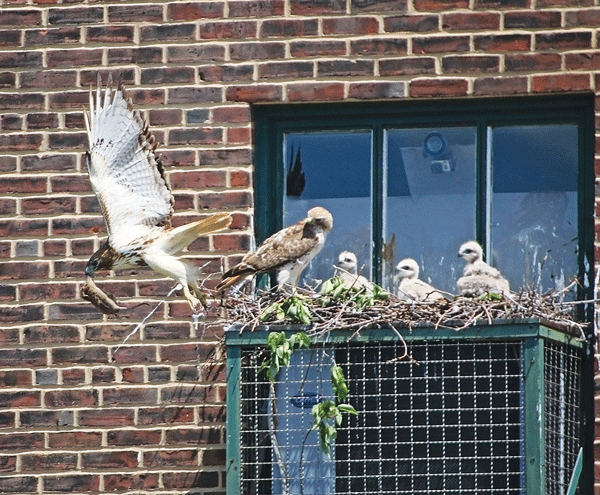
Christo’s carnivorous nature can lead to trouble, she noted, as was the case the day before when she received an ominous phone call from a fellow birder.
“They said, ‘You need to come to the park right now,’ ” she recalled.
About two dozen people rushed to Christo’s rescue after a fan of a rival ornithological species — perhaps absentmindedly — placed a pigeon on a railing near the ravenous Christo, who hunts for about a half-dozen meals per day. Before long, the ravenous raptor was airborne with the pigeon, dodging flying projectiles thrown by the man, a park regular. Things got a little physical between hawk supporters and the pigeon feeder but Christo escaped unscathed, according to Goggin, who was on the scene by then.
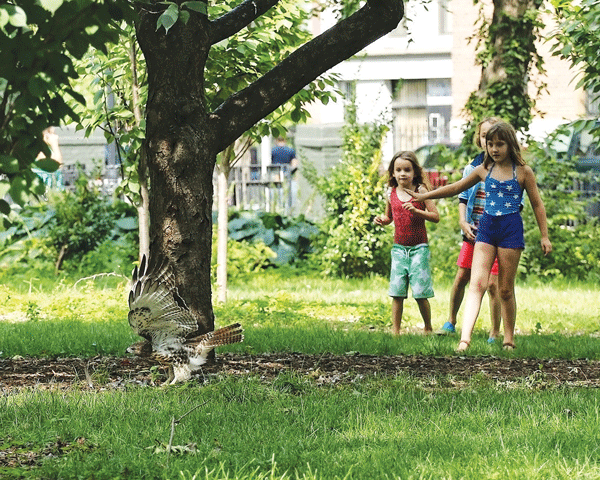
Community members also rallied back in June when the first flight of one of the baby hawks went awry. The hawks’ nest was perched on a seventh-floor air conditioner overlooking Avenue B at the Christodora House — hence Christo’s name. As the birds were under webcam surveillance, observers quickly noticed that one of the young hawks was missing.
“Around 6:15 p.m. after persistent searching, a resident of Ninth St. found the hawk in an airshaft between buildings. The cavalry was called and a rescue commenced,” a June 23 blog entry reported.
They named him Shaft.
Helping with the rescue was an urban park ranger, who also helped save a fledgling hawk in Washington Square earlier this year. The hero to bird lovers could not speak on the record due to Parks Department restrictions, but intimated that birds of prey factored in a job hunt about 10 years ago.
“That’s the whole reason I became a ranger, to be around hawks all day,” the ranger said.
The East Village’s topography makes for ideal living space for red-tailed hawks, which appear to enjoy the concrete jungle as much as moderately covered forest land. Observers, however, have noticed how the city-slicker hunting birds have to fall down a bit before learning what to expect from the area’s more natural features, such as thin branches that a more-experienced hawk would instantly recognize as an inadequate perch.
“Bird did not even know what a tree is because he grew up on an air conditioner,” said Dennis Edge, as he watched one of the newborns fumble about on a tree branch. He added he wasn’t sure whether it was Shaft or siblings Number Three or Middle Child he was looking at, since the young are difficult to differentiate from each other.
The red-tailed hawks’ rebounding in Downtown Manhattan, though, ironically spurred a growth in Tompkins Square’s rat population several years ago, which got so bad it was dubbed “Ratpalooza.” When hawks take up residence and procreate, nearby rat-poisoning efforts must be suspended, to protect the hawks’ young from ingesting poison through rodent meat brought to them by their parents up to several times a day.
Following a July 2011 article in The Villager about the Tompkins rodent explosion, Parks Department officials brought the rats under control with traps, garbage-control and eventually restarting the use of poison.
The ongoing saga of Christo and Co. gives a renewed sense of hope for one longtime resident. Gentrification tamed much of the neighborhood, but the re-emergence of the magnificent winged park denizens illustrates that something wild still resides within the East Village, according to Edward Arrocha. He has avidly followed red-tailed hawks around the city since 1996.
“For me, it’s a gift,” he said, “because I remember when there were none in the park.”



































